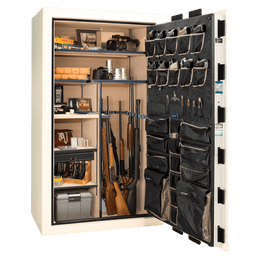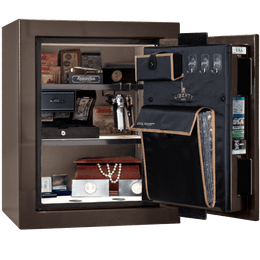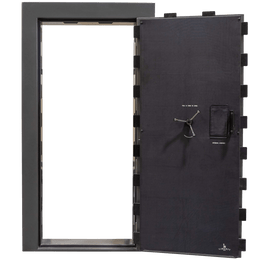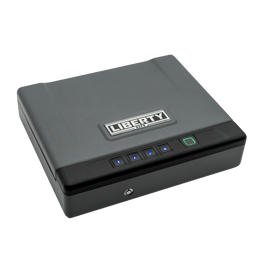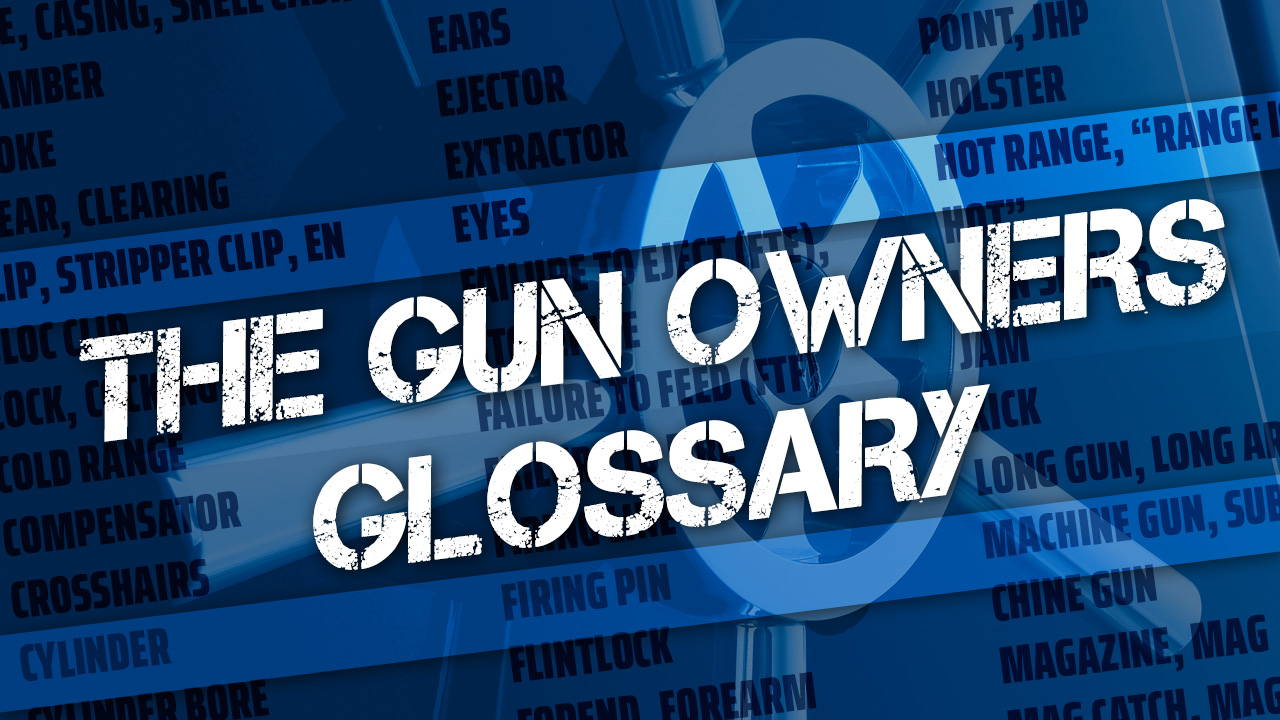As with any hobby, activity, or interest, the firearms world has its own vocabulary and specific word usage. New or returning shooters may be confused by certain terms they might hear on the range or in gun shops, or when reading their owner’s manual.
The purpose of this article is to provide a basic glossary of commonly used “gun terms” that every firearms enthusiast or shooter should be familiar with. (Please note: This glossary is not intended to be a comprehensive list of every possible gun-related word, but rather those we feel you might encounter most often today.) Let’s jump right in!
Gun terms and glossary
1911
Pronounced “nineteen-eleven,” this refers to the popular semi-automatic pistol (and all clones) designed by John Moses Browning and adopted by the US army in the year 1911.
Action
The mechanism of a firearm that allows the introduction of a new cartridge for firing and removal of the spent casing. Common action types include bolt-action, lever-action, pump-action, break-action, and semi-automatic (recoil, inertia, or gas-operated).
Aperture sight
A type of (usually rear) iron sight that contains one or more apertures or openings through which the shooter looks to align the front sight and the target. More common on rifles than on other types of firearms.
AK
A general term used to describe the various clones of the AK-47, AKM, AK-74 rifle and variants. AK stands for Avtomat Kalashnikova, Russian for “automatic (firearm) Kalashnikov,” for its designer, Mikhail Kalashnikov, who designed the first accepted version of the weapon in 1947.
AR
A general term used to describe the AR-15 type rifle and clones, originally designed and developed by Eugene Stoner and Jim Sullivan. Often incorrectly defined to mean “Assault Rifle,” the AR in the name originally came from “ArmaLite Rifle.”
Automatic, autoloader, auto
This term may refer informally to any semi-automatic firearm, or it may refer to fully automatic machine guns that are capable of firing multiple rounds with a single pull of the trigger. Usually the latter are called “full-auto” or “fully automatic” for clarity.
Barrel
The barrel is the tube-shaped part of a firearm through which the projectile travels. A firearm may have more than one barrel.
Black powder
Until the end of the 19th century, all firearms burned the same type of gunpowder or “black powder” in different granulations. Today, antique or replica black powder firearms are used for fun, hunting, and competition, but almost all modern firearms designs use “smokeless powder” which is more stable, powerful, and clean-burning than black powder, in addition to being less corrosive. “Blackpowder substitutes” are modern powders that can safely be used in black powder firearms.
Bead
In common usage, a bead or bead sight is a basic type of front sight, usually on a shotgun barrel, comprising a simple metal or polymer sphere brazed or screwed into the barrel or sight rib. You might hear old-timers say phrases like, “I drew a bead on him,” which means to aim carefully.
Bore
The interior of the firearm’s barrel, as in “be sure to clean the bore” or “inspect the bore for copper fouling.”
Basepad, base pad, baseplate
Typically used to describe the removable bottom portion of a detachable box magazine.
Birdshot
Shotguns can fire a wide range of ammunition types. Birdshot is composed of very small lead (or bismuth, or tungsten, or steel) pellets that, when fired, create a cloud of tiny projectiles suitable for hitting flying birds or airborne targets.
Brake, muzzle brake
A device fitted or integral to a firearm’s muzzle is intended to reduce the amount of recoil the shooter feels by redirecting the expanding gases to the side. Sometimes incorrectly spelled “muzzle break.”
Brass
Commonly used to describe empty cartridge casings. Traditionally, most cartridge casings are made of brass or contain brass.
Breech
The part of the barrel/action that is opened to allow insertion of ammunition, usually at the rear of the barrel. In basic orientation terms, the breech is the opposite of the muzzle.
Buckshot
Much larger than birdshot, buckshot is so named because it is composed of pellets suitable for hunting larger animals like “bucks”/deer. Sizes of common buckshot pellets range from 000 or “triple-aught” buck (at .36” in diameter), through 00 “double-aught” (at .32”), and down to #4 buck at .24” per pellet. Buckshot is often used for self-defense or tactical purposes.
Bullet trap or bullet stop
Often used in indoor shooting ranges, a backstop that safely catches and contains fired projectiles.
Burst fire
This term refers to the capability of some submachine guns or machine guns to fire 2, 3, or 4-round “bursts” with each press of the trigger. An internal mechanical device limits the burst to the specified number of rounds.
Butt, buttstock, buttpad, buttplate
On a rifle or shotgun, the butt is the rear of the gun where it meets the shooter’s shoulder. The buttstock is the entire portion of the stock to the rear of the firing grip. This may be a separate piece, or it may be integral with a one-piece stock. The buttpad or buttplate is a separate piece at the back of the buttstock, which protects the shooter from excessive recoil or protects the buttstock when placed on the ground, or both.
Caliber
In common usage, “caliber” refers to the dimensions of the firearm’s ammunition and barrel diameter. This may be designated in metric or “standard” units. A pistol in caliber 9x19 (also known as 9mm, 9mm Para, 9mm Parabellum) has a bore/projectile diameter of ~9mm, with a case length of 19mm. Similarly, a pistol chambered in .45 ACP has a bore/projectile diameter of ~.45” and the case dimensions specified by the .45 Automatic Colt Pistol cartridge designer.
This term may be used specifically (as above) or generally, as in “I prefer .30-caliber rifles”—referring to all rifles that fire a projectile of ~.30” in diameter, regardless of their case dimensions.
Carbine
Technically, a carbine is a shortened version of a military service rifle, or historically, a shortened version of the infantryman’s musket or rifle suitable for use by cavalry. Informally, any short rifle may be called a carbine. Both pronunciations—CAR-bean, like a can of beans, and CAR-bine, which rhymes with “line”—are considered correct.
Cartridge
In common, non-military usage, a cartridge is a complete unit of ammunition, composed of the case, primer, gunpowder, and projectile/s in a single, self-contained unit. See: Round.
Case, casing, shell casing
In common usage, a “shell casing” or cartridge case is what contains the primer, gunpowder, and projectile/s in a self-contained unit. Modern casings are typically metal (usually brass, steel, or aluminum) for handguns and rifles, and plastic with a steel or brass base/rim for shotguns.
Chamber
The rear portion of the barrel (or cylinder, in revolvers) where the cartridge is inserted in preparation for firing.
Choke
A tapered internal constriction near the end of a barrel. Most are typically used on shotguns (to improve shot pattern and increase effective range), but some target-grade muzzleloading rifles and pistols may also have a similar feature. Common shotgun choke designations include Cylinder, Skeet, Improved Cylinder, Modified, and Full.
Clear, clearing
The process of completely unloading a firearm and demonstrating that it is safe. “Clear” may also refer to a “safe range” in certain shooting competitions.
Clip, stripper clip, en bloc clip
Archaically, the term “clip” was often used to refer to a removable box magazine, even by militaries and manufacturers. However, modern usage dictates that a clip is a device for holding cartridges together for ready insertion into a firearm’s magazine. A stripper clip is used to strip fresh rounds into an internal or detachable magazine and is then discarded, while an “en bloc” clip is inserted fully into the magazine (example: M1 Garand rifle) and is ejected with the empty casing when the firearm runs empty.
Cock, cocking
The act of manually pulling back the hammer, slide, or cocking piece of a gun, preparing it to be fired. The “cock” is also the part of a flintlock firearm that holds the flint and which falls when the trigger is pulled.
Cold range
A range command or condition indicating it’s safe to walk down range, replace targets, etc. Usually, no firearms may be handled while the range is cold.
Compensator
Similar to a muzzle brake, a compensator is a device attached or integral to a barrel’s muzzle, designed to reduce muzzle “flip” or climb by redirecting the expanding gases upward.
Crosshairs
Traditional telescopic sights (or scopes) contain physical or etched-on vertical and horizontal lines to aid with aiming. They are known as crosshairs due to their intersecting, cross-shaped design and thin profile.
Cylinder
In a revolver, a rotating cylinder contains multiple chambers. As the mechanism rotates each chamber into alignment with the barrel, the next projectile can be fired.
Cylinder bore
A shotgun term designating that there is no choke or restriction at the front of the barrel.
Decock, decocker
The action or part that safely lowers the hammer or removes tension on the striker when the shooter doesn’t wish to immediately fire a shot. Common on many double-action semi-automatic pistols.
DA/SA
This acronym is used to describe “traditional” double action/single action semi-automatic pistols, such as the Beretta 92 series, the SIG P220 series, and the CZ75 series. These pistols have two trigger modes: 1. Double action (meaning the trigger performs both the function of cocking the hammer and firing the firearm) for the first shot; and 2. Single action for subsequent shots (meaning the trigger, once the hammer is cocked by the user or by the reciprocating slide after firing a shot, performs the single action of firing the next shot until the pistol is decocked or returned to double-action mode).
Double action, DA
This term refers to a firearm with a trigger system in which the trigger performs two functions: 1. Cocking the hammer (or striker), and 2. Releasing the hammer/firing a shot. Almost all modern defensive revolvers are double-action. However, on a traditional double-action revolver, the hammer may also be manually cocked by the shooter to fire a “single action” shot if desired.
Double action only, DAO
A firearm (usually a revolver or semi-automatic handgun) with a trigger that returns fully forward, and a hammer or striker that returns to its down/forward or rested, uncocked position after each shot. The hammer or striker may not be manually cocked for a “single action” shot in this design.
Double tap
When a shooter fires two shots in rapid succession.
Down range, downrange
The area of a formal or informal shooting range in front of the firing line, where shooters may place targets and safely discharge their firearms.
Dram, dram equivalent
Shotgun projectile weights are typically measured in ounces in the US, and shotgun powder weights are often listed in drams or (usually) smokeless powder “dram equivalents” on commercial shotgun ammunition packaging. (A dram is an archaic weight measure left over from the days of black powder shotgun cartridges, but is still used today. Using that measure, 16 drams of black powder equal one ounce of weight, and 256 drams of black powder weigh one pound.)
Dry firing
Firing a firearm when it’s “dry” means “unloaded.” For checking proper function or for training purposes, dry firing can be a useful practice. Certain competitions also require you to dry fire your firearm in a safe direction after unloading and showing “clear” to the Safety Officer. Always remove all ammo from the area and triple-check that the gun is unloaded before dry firing. Also, refer to your owner’s manual: some firearms cannot safely be dry-fired without damaging the gun.
Dud
A round of ammunition that does not fire when the primer is struck by the striker or firing pin. A dud may be caused by deterioration (or absence) of the priming compound, a faulty primer, a weak hammer/striker spring, contaminated powder, or other factors.
Dummy, dummy round
A training or action-proving round that contains no primer or powder.
Ears
A gun-culture term for proper hearing protection. Often used by Safety Officers or trainers in the phrase “eyes and ears.”
Ejector
A solid or spring-assisted firearm part that applies pressure to (usually) the left part of the rear surface of the fired cartridge case and pushes it out of the ejection port.
Extractor
The extractor is a claw-like part that grabs onto the rim of the case and helps pull the spent case from the chamber.
Eyes
A gun-culture term for proper protective eyewear. Often used by Safety Officers or trainers in the phrase “eyes and ears.”
Failure to eject (FTE), stovepipe
A type of malfunction in automatic or semi-automatic firearms where the fired/empty case is not completely ejected from the firearm, and may remain in the chamber or stuck partially in the ejection port. In pistol training, this may be referred to as a “stovepipe” when the empty brass is stuck between the slide/ejection port and the rear of the barrel, and it looks similar to an old stovepipe on top of a wood-burning stove.
Failure to feed (FTF)
A type of malfunction where the cartridge fails to properly enter the chamber for firing.
Failure to Fire (Misfire)
A type of malfunction when the trigger is pulled and the hammer, cock, or striker falls, but the primer, percussion cap, or flintlock charge fails to ignite the primary powder charge, and no projectile is fired.
For modern cartridge-firing guns, the NRA recommends waiting 60 seconds after a failure to fire before opening the action, with the muzzle pointed in a safe direction, and 2 minutes for a muzzleloader.
Firing line
At a range, the line or area that shooters stay behind to safely fire their guns down range.
Firing pin
This part is what impacts the primer, causing the powder to ignite, and fire the gun.
Flintlock
This type of ignition system (for muzzleloaders) employs a piece of sharp flint to strike a metal surface, making sparks that ignite the priming charge of black powder, which then ignite the main charge and fire the gun. Sometimes informally called a “rock lock.” (Flint is a type of rock.)
Forend, forearm
The integral or separate part of a firearm’s stock where the shooter’s “support hand” grasps the firearm, usually below the barrel.
Fouling
This term describes any type of firing debris, carbon, lead, wax, or plastic in a firearm’s action or bore which can impede regular function, impair accuracy, and damage the gun if not removed through cleaning.
Four rules, or the four rules of firearm safety
The four rules of firearm safety were initially developed by Colonel Jeff Cooper, the father of the Modern Technique of handgun shooting. There are many variations in wording, but the main points are:
- 1. Always treat firearms as if they are loaded;
- 2. Never let the muzzle cover anything you are not willing to destroy (in other words, always keep guns pointed in a safe direction);
- 3. Keep your finger off the trigger until your sights are on the target and you’re ready to shoot,; and
- 4. Be sure of your target and what’s behind it.
Furniture
In gun speak, furniture refers to the buttstock and forend on a shotgun or rifle, usually when discussing wood parts, but also may refer to the buttstock, forend, and grip set of a modular rifle like the AR-15.
Gauge
In firearm terms, “gauge” refers to the size of a shotgun’s bore diameter or caliber. The smaller the gauge, the larger the bore diameter. A shotgun’s gauge was originally determined by the number of pure lead balls of bore diameter that would weigh one pound. The larger the gauge/ball, the fewer balls would weigh one pound. So, a 20-gauge shotgun (where 20 lead balls of bore diameter weigh one pound) has a smaller bore diameter than a 12-gauge shotgun (where only 12, larger, lead balls weigh one pound).
The term “gauge” may also refer to a measuring device to check cartridge headspace in reloading, or timing in a semi-automatic or automatic firearm, or headspace when setting barrel/chamber dimensions, or for other uses.
Glock
Any of various semi-automatic, short recoil-operated handguns designed and produced by the Austrian company, Glock Ges.m.b.H (trademarked as GLOCK). Glocks are now made in both Austria and the USA.
Grain, grains
Bullet weights and powder charges for rifles and shotguns are typically measured in grains in most western countries. Grain is not an individual flake or granule of gunpowder, but rather a grain is a measurement of weight equal to 1/7,000th of a pound (there are 7,000 grains in one pound).
Grip
The part of a firearm held by the firing hand (which manipulates the trigger). A grip can be a separate, removable piece, as on most revolvers or AR-15s, or it can simply describe the area of the wood or polymer buttstock of a rifle or shotgun where you grip it. A pistol’s grip may be integral to the frame, like on many polymer handguns, or it may have removable “grip panels” that the user can remove, replace, and customize as desired.
Hair-trigger
A semi-archaic term describing a very sensitive trigger that will fire the gun with very little pressure. The term derives from the hyperbolic statement that the weight of a single hair is enough to fire the shot.
Hammer
The (usually external) part of some firearms is manually or mechanically “cocked,” or retracted against spring tension, and which is released when the trigger is pulled. The hammer then falls and strikes the firing pin or percussion cap, firing the gun.
Handgun
In common usage, a handgun is a firearm designed and intended to be used by one or both hands, rather than resting a portion of the firearm against the shooter’s shoulder or cheek.
Hangfire or hang fire
More common in black powder firearms, or when using surplus cartridges of questionable quality and age, a hangfire is a momentary delay between the press of the trigger and the ignition of the primary powder charge. This can be a fraction of a second, or up to several seconds in extreme cases, and can be very dangerous if the shooter moves the gun off target or (worse) opens the action before the round discharges.
Hollow point, hollowpoint, JHP
A bullet with a hollowed-out nose causes the bullet to expand on impact, delivering more energy to the target and controlling penetration. “Jacketed hollow point” or JHP is a common acronym used in defensive or hunting ammunition. The “jacket” is a copper (or similar) metal sleeve swaged or plated onto the exterior of a lead bullet.
Holster
The means for carrying a firearm when not in the shooter’s hand. Usually, this term relates to a handgun, typically on the user’s belt, though there are pocket holsters and other holsters intended for mounting to tactical vests or in automobiles, etc. Most holsters today are made of polymer/Kydex, leather, or nylon.
Hot range, “range is hot”
This term describes an informal or formal shooting range that is being used or approved for live fire. It is not safe to walk downrange because firearms may be loaded and fired at any time.
Iron sights
“Traditional,” non-electronic, non-optical aiming devices mounted (or integral) to a firearm, consisting of rear and front sights that must be aligned to aid accuracy. Usually made of steel for durability.
Jam
Any of a number of firearm-feeding malfunctions that render the gun temporarily inoperable. Some types of malfunctions may require disassembly of the firearm to remedy, or require the use of tools. (See also: Malfunction.)
Kick
The recoil, or the rearward movement of a gun when it is fired, that the shooter feels.
Long gun, long arm
An informal term for non-handgun firearms, such as rifles and shotguns.
Machine gun, submachine gun
In the US, any firearm that can fire more than one shot with each pull of the trigger is classified as a machine gun. A fully automatic firearm is a machine gun, as is a select-fire weapon or a weapon capable of burst fire. A submachine gun is a term generally used to distinguish one of these firearms that fires handgun cartridges.
Magazine, mag
Usually, this refers to a “detachable box magazine” which contains a number of cartridges and is the means for inserting and feeding them into the gun. However, many shotguns and rifles have integral, non-removable tubular magazines, and many rifles have internal or integral, non-removable box magazines. In this case, the magazine is the part of the gun containing the source of ammunition.
Mag catch, magazine release
The button, lever, or mechanism that the shooter uses to release a detachable magazine from a firearm.
Malfunction
A general term for any type of firing or feeding stoppage that may occur when using a firearm. Some examples are failure to fire/misfire, failure to feed (FTF), failure to eject (FTE), and double feed.
Misfire
See: Failure to fire.
Muzzle
The end of a gun barrel where the fired projectile exits. In basic orientation terms, the muzzle is the opposite of the breech. “Muzzle” is also sometimes a range command during some practical shooting events, which a Safety Officer may call “muzzle” if you are pointing your firearm close to the limits of the shooting area or your own body. (See: Sweep.)
Muzzleloader or muzzle-loader
A firearm that is loaded from the muzzle, rather than from the breech, using loose black powder or compressed gunpowder pellets, and a separate projectile and priming mechanism, rather than utilizing a self-contained cartridge.
Open sight, open sights
Usually, this term describes a type of iron sights where the rear sight is a simple notch that is “open” on top, rather than containing any sort of aperture or “peep” sight.
Optic
This term generally refers to any electronic or mechanical sight that provides the shooter with a larger field of view around the target compared to open/iron sights. An optic may be magnified or non-magnified.
Peep sight
See: Aperture sight.
Percussion cap, cap
In black powder shooting, the percussion cap or “cap” is effectively the primer (see below) that ignites the powder charge when struck by the hammer, but some modern muzzleloader designs use primers in place of percussion caps.
Pistol
Originally the term pistol was used to describe any firearm intended to be held and fired with one hand, but today “pistol” usually refers to a semi-automatic handgun. A revolver is the other primary type of handgun.
Plinking
Informal target shooting at non-paper targets such as soda cans, clay pigeons, fruit, etc., is typically not done at a regulated shooting range. (Be sure to always clean up your mess.)
Primer
The part of a cartridge containing a small amount of shock-sensitive explosive material such as fulminate of mercury, lead styphnate, or bismuth oxide, which ignites when struck by the striker or firing pin, igniting the powder charge and firing the gun. In black powder shooting, the percussion cap or “cap” is effectively the primer, but some modern muzzleloaders use modern primers in place of percussion caps.
Rack
“Rack the slide” or “rack the action” is a term typically used when discussing loading semi-automatic pistols and rifles, and describes the retraction of the slide or bolt to load/unload the chamber or to clear a malfunction.
Recoil
The rearward movement of a gun when it is fired. (See also: Kick.)
Red dot
A type of electronically, chemically, radioactively, or solar-illuminated optic that uses a red dot or other reticle as the aiming point as you look through the device. (“Red dot” is a general term; many optics of this type use green or yellow illumination, and some can be switched selectively by the user.)
Revolver
A type of firearm, usually a handgun, includes a revolving cylinder containing multiple chambers, which are mechanically aligned with the barrel for each shot.
Rifling, rifled
Rifling is the spiral-patterned grooves in a firearm’s barrel that spin the bullet, improving accuracy. A rifled barrel has rifling; a smoothbore does not.
Round
Today, in common non-military usage, a round refers to one piece of ammunition or a single cartridge.
Scattergun
An archaic nickname for “shotgun.”
Safety
A manual or internal mechanism that prevents the firearm from being discharged unintentionally.
SBR, short-barreled rifle
In the USA, a rifle with a barrel shorter than 16 inches must be registered as a “short-barreled rifle” with the ATF (Bureau of Alcohol, Tobacco, Firearms and Explosives) and the owner must complete federal paperwork and pay a $200 tax prior to manufacturing or purchasing/transferring the rifle.
Scope
A “telescopic sight,” (or scope) usually generally tubular in shape, is attached to the top of a firearm, allowing better target identification and improved potential accuracy at longer distances.
Select-fire
This term refers to a firearm with a mechanism capable of selecting between semi-automatic and fully automatic or burst fire.
Semi-automatic, semi-auto
This term describes a firearm that is capable of firing a single round each time the trigger is pulled, without requiring the shooter to manipulate a loading mechanism to eject the spent cartridge and load a fresh one each time.
Set trigger
Some firearms (typically muzzleloading rifles or pistols, but some hunting rifles of older European designs) have 2 triggers, where (usually) the rear trigger is used to “set” the front trigger for a very light release, sometimes called a “hair trigger” (see above). When you’re ready to shoot, you pull the rear trigger, and then very gently touch the front trigger when your sights are aligned on the target.
Shot, shotshell
Shot refers to the individual pellets fired by a shotgun. A shotshell is a cartridge loaded with shot. Shotshells are almost always intended for use in shotguns, but there are specialized “snake shot” or “rat shot” rounds designed to be fired from handguns.
Shotgun
A firearm is designed to fire a “shot,” or multiple small pellets, rather than a single bullet. Almost all shotguns are smoothbores. For more details, see our Shotgun Ammo 101 article.
Single-action, single action only, SAO
This term usually refers to either a traditional, “cowboy-type” revolver or a semi-automatic pistol in which the hammer must be cocked before each shot, either manually by the shooter (in the case of the revolver) or mechanically by the reciprocation of the slide (in the case of the pistol).
Silencer, suppressor
A device attached (or integral) to the barrel of a firearm to reduce the amount of noise and flash generated when the gun is fired.
Slide
Usually, this refers to the top portion of a semi-automatic handgun that reciprocates rearward and forward as the firearm is fired.
Slide stop, slide release, slide lock lever
Generally, these and similar terms (depending on the manufacturer’s terminology) refer to the mechanism that manually or automatically locks a pistol’s slide to the rear, either when the magazine runs empty, or for inspection/cleaning/disassembly.
Sling
A strap of fabric or leather is used to secure a firearm (usually on a shooter’s shoulder for ease of transport) or assist in accurate aiming. Most commonly used on rifles.
Slug
Technically, and most commonly, a slug refers to a shotgun round that contains a single projectile, rather than multiple pellets of shot. Informally, a slug may refer to any bullet, typically when referring to a projectile that has been fired and recovered. For more details see our Shotgun Ammo 101 article.
Smith
This term is used both to refer informally to a Smith & Wesson brand firearm and as an abbreviated term for “gunsmith.”
Smoothbore
A firearm with a barrel that is not rifled. Almost all shotguns are smoothbores. Many antique and replica black powder muzzle-loading firearms are smoothbores.
Squib
A squib (also called squib round or squib load) is a dangerous condition in which either there is insufficient gunpowder in a cartridge to fully expel the projectile from the barrel, or the powder doesn’t ignite fully due to contamination, a bad primer, or other factors. This can result in the projectile being fired into the barrel and becoming lodged, and if not remedied before firing a subsequent shot, can destroy the firearm and injure the shooter or bystanders.
Stock, gunstock
The stock (commonly used) or gunstock is the part of a long gun that provides structural support, and to which the barreled action is attached. The stock also provides a means for the shooter to grasp and brace the gun, and hold the butt portion of the stock against the shoulder when aiming and shooting. “Stocks” may also refer to a revolver’s grip, usually when discussing wood or bone grips.
Striker-fire, striker-fired
In modern nomenclature, the striker is effectively the firing pin that strikes the primer, causing the gun to fire. In a striker-fired design, there is no external or internal hammer that must be cocked in order to fire the gun. The internal striker is partially or fully retracted and released as the trigger is pulled, and the striker then moves forward under spring pressure to strike the primer. The Glock series of pistols is the most common modern type of striker-fired firearm.
Strong hand
In firearm training or competition, your strong hand is your primary firing hand, or the hand you use to grip a handgun and to pull the trigger. Usually, if you’re right-handed, your right hand is your strong hand.
Support hand, weak hand
In firearm training or competition, your support hand is the hand other than your “strong hand,” and is used to provide a more stable grip on a handgun or to support the weight of a long gun. Usually, if you’re right-handed, your left hand is your support hand.
Sweep, sweeping
If you break the second of the four rules of firearm safety (see above), and allow the muzzle of your gun to inadvertently point at another person or part of your own body, it’s called “sweeping.” This will result in being disqualified from a shooting competition and possible disciplinary action in a police or military unit.
Tap-rack, tap-rack-bang
A training term sometimes used in instructing shooters to clear malfunctions in semi-automatic or automatic firearms. “Tap” indicates the shooter should firmly strike the bottom of the magazine to ensure it’s fully seated, and “rack” indicates the shooter should smartly retract the slide, bolt, or bolt handle to expel a dud round, empty casing, or another firing blockage.
Trigger, trigger guard
The trigger is what the shooter presses to make the gunfire, usually a vertical part that slides or pivots to the rear. Typically a shooter presses or “pulls” the trigger with his/her index finger. The trigger guard is the surrounding area of the firearm that prevents the trigger from being bumped or inadvertently contacted by clothing, brush, objects, etc.
Vault, gun vault, handgun vault, gun locker
The best home safe is very different from a gun vault or handgun vault. In common usage, the term “gun vault” is a room or enclosure with a secure locking mechanism, a hinged “safe” door, and provision inside for storage of firearms and protecting them from theft, unauthorized access, corrosion, and fire damage. Of course, other valuables and items may be stored in a gun vault as well. Since each room and gun vault builder is different, “gun vault” is necessarily a broadly defined term, but basically, the vault door is integral to creating a gun vault. The vault itself can be any room in your home, place of residence, or office that you secure with a vault door. That room effectively becomes your “gun vault.”
A gun safe is a stand-alone container, usually made of steel, that may be moved from one location to another, and is generally much smaller than a vault. If you travel a lot, you can purchase a truck gun safe that is small enough to fit in your vehicle. The door and locking mechanism of a gun safe may be very similar to that of a gun vault. You can even purchase a biometric gun safe that will only open with the right fingerprint, just like large gun vaults.
There’s another way the term “gun vault” is sometimes used, though “gun vault” most often refers to a vault room with a vault door securing it. Handgun vaults are small gun safes intended to hold one or two handguns and other small valuables, which keep them secure but available for ready access to the authorized user. But when someone says “gun vault” they’re most often talking about a secure room with a “safe door” or vault door.
For more details, see our article on the difference between a gun safe and a vault.
Wadcutter, semi-wadcutter, SWC
This term refers to a specific type of bullet, designed to cut clean holes in paper targets for easier/more accurate scoring. A wadcutter, or “full wadcutter” bullet has a completely flat nose with sharp edges, basically a flying cylinder. A semi-wadcutter bullet takes that cylinder and adds an integral, truncated cone shape on top of it, also with a sharp, flat nose. Semi-wadcutter bullets are also sometimes used in hunting and defensive roles.
Wheelgun
A gun-culture nickname for “revolver,” usually a double-action revolver.
Zero, zeroing
Your gun’s “zero” is the point at which the sights are aligned with the desired point of projectile impact at a specified distance. You can adjust your gun’s zero by adjusting the iron sights (if an adjustment is possible on your firearm) or using the adjustment dials on a telescopic sight. This process is sometimes called “zeroing in” or “zeroing” your firearm.
Get the best gun safes at Liberty Safe
As you become familiar with the relevant gun terms and safety practices, be sure to invest in a quality, USA-made gun closet gun safe or gun vault. Liberty offers fire-resistant safes loaded with security features from the “entry-level” to top-of-the-line. Read more in our article on the different types of Liberty Safes, or see our safes in person at a dealer near you.
*Made in the U.S.A. from U.S. and Global Parts.


